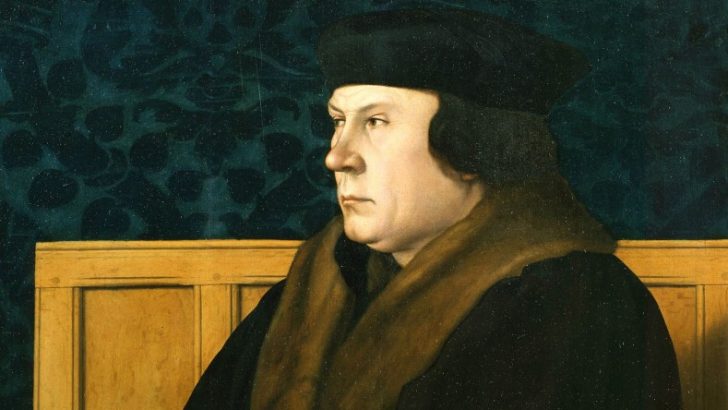Thomas Cromwell: A Life
by Diarmaid MacCulloch (Allen Lane, £22.50)
Hillary Mantel’s inspired trilogy of novels beginning with Wolf Hall has prompted a lively interest in Thomas Cromwell, best known as Henry VIII’s consummate ‘fixer’. Her brilliant recreation of life in the 16th century remains in the demesne of fiction.
Diarmaid McCulloch’s Life is an altogether different genre. Based on an enormous Thomas Cromwell archive, it is a work of profound historical scholarship. As Mantel’s trilogy still occupies a main place in bookshops, Diarmaid McCulloch’s very different account (though commented on here) is worth another look at from a slightly different point of view.
Cromwell was born at Putney, London, ca 1485. His father was described as a yeoman and a brewer who was no stranger to the courts. Seemingly because of his father’s brutality, at an early age Cromwell travelled to Italy, where he served in the French army. By 1510 he was in Antwerp in Belgium prospering in the cloth trade.
Service
In 1522 Cromwell was back in England and had entered Cardinal Wolsey’s service. He studied law and acted as his master’s solicitor. In 1523 he sat in parliament. Two years later Wolsey employed him to dissolve some lesser monasteries. On their property the cardinal established colleges at Ipswich and Oxford.
Notwithstanding the fact that he had become the cardinal’s closest adviser and associate, Cromwell skilfully avoided being affected by the former’s fall from grace in 1529.
From 1530 onwards, Cromwell worked his way up in the royal favour until he reached the inner circle of the king’s confidential advisers. There followed public appointments: master of the rolls in 1534 and lord privy seal in 1536. Thereafter he was in complete control of the government, though he remained careful to pretend to be acting on the king’s authority. On behalf of his master he completed the dissolution of the monasteries and the break from Rome.
In 1536 Cromwell was appointed the king’s vice-gerent in spirituals, that is his deputy as head of the Church. He ordered that every parish should possess an English Bible and he attacked excesses in the practice of pilgrimages and ‘image worship’. Thus he came to be associated with a radical policy of reform and the Reformation.
Initially, historians depicted Cromwell as consumed with Protestant zeal”
Cromwell’s exercise of absolute power created numerous powerful enemies. They persuaded the king that he was a heretic and a traitor. He was arrested, condemned without a hearing and executed on July 28, 1540.
In his administration of Ireland Cromwell’s chief client was his friend Sir Anthony St Leger. He was head of the St Leger family, which had settled in the vicinity of Doneraile in North Cork.
As the king’s commissioner, St Leger in 1537 concluded agreements with three Gaelic lords, whose lands bordered territories of the English Lordship, the ‘Pale’. They offered to submit to the sovereignty of the Tudor Crown in return for titles of nobility. Thus the kingdom of Ireland was established in 1541 and Henry was made Rex (king). Prior to that time, kings of England had been styled Dominus (lord) of Ireland.
Sir Anthony St Leger became Lord Deputy of Ireland and held this post until 1556.
Initially, historians depicted Cromwell as consumed with Protestant zeal. Later he was viewed as having had no religion at all. MacCulloch subscribes to neither of these assessments. For him Cromwell had a Faith even if it was not very ardent and liable to be subordinated to political considerations.
As Cromwell once told some Lutheran envoy’s that on the whole he was of their mind in matters of religion, but “as the world now stood, he would believe even as his master, the king, believed”.
With regard to Cromwell’s moral character it can be said that, while he was just as ruthless as his notorious master, he was not quite as bloodthirsty!


 Thomas Cromwell
Thomas Cromwell 